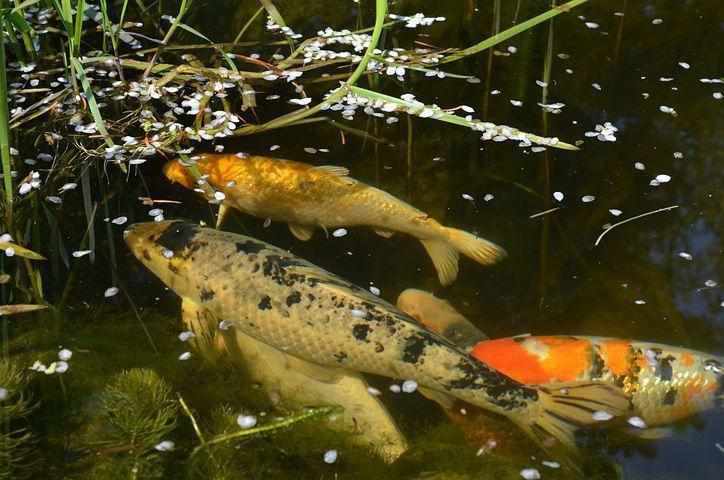
Winter is almost here! Here are some helpful tips to keep your pond healthy over the cold winter months.
Koi Care
- As the weather cools down, koi and goldfish metabolism starts to slow. To reduce the risk of over-feeding your fish during the colder months, switch to a wheat-germ based food as the temperatures fall below 70-60°. Wheat germ is more gentle on your fish’s metabolism and digestive system. When temperatures drop below 50°F, the bacteria in a fish’s digestive system are no longer able to process food. At this point, it is best to stop feeding your fish. While some think it's cruel to not feed the koi over the winter, in climates where the water temp dips below 50 degrees, you are actually doing them a favor. While koi fish don't hibernate per say, they do go dormant and don't move a whole bunch as they are preserving energy. Digestion of food takes away vital energy needed to survive the winter.
- If you are worried about your fish freezing over the winter months, a depth of at least 18 inches should keep your fish safe from freezing. If you live in a very cold climate, a depth of 30 inches will ensure your pond won’t freeze through.
Plant Care
- Dead leaves from plants can fall into your pond and start to decompose over the winter, depositing ammonia into the pond water. Make sure to remove all dead and dying leaves from around the pond, as well as trim back your plants to prevent future damage.
- Placing a net over the pond will also prevent dying leaves from falling into your pond.
- Tropical plants should be brought inside after the temperatures fall under 60°F.
- Don't fertilize during the winter - you don't want to wake the plants until the spring.
- The most important thing to try to do for plants is to avoid freezing of their root system. Thus, if you have plants on a shelf in your pond which could be at risk of freezing, one trick is to just move them down several inches so that their tubers are safely below the freeze line and don't freeze and die.
Pond Maintenance
- If there is a risk that your waterfall might freeze over the winter, consider turning it off and/or diverting the water so that it simply returns underneath the water level instead of the waterfall. While waterfalls can make some pretty ice sculptures the ice dams have often been known to cause water to leak out of the pond which can be potentially disastrous if they extend beyond the edge of the liner. additionally, waterfalls, while a good source of aeration for a pond, do make the pond more susceptible to faster temperature fluctuations. the goal is to try to keep the temp as stable as possible and avoid large temp swings so turning off the waterfall in the winter also helps with this too.
- Some pond owners (especially in super cold areas) choose to turn off their pumps all together for the winter. If you decide to do this, be sure that you bring the pump inside and fully out all of the lines so that there is no risk of the water expanding inside the pumps and bursting them. Also, if you decide to head this route, we also recommend adding an aeration kit, a de-icer, or a small recirculating underwater pump on a plant shelf to keep the pond from fully freezing over.
- If you added salt to your pond, it is important to dilute your pond water during the winter. During the colder months, the salt in your pond can actually bring the water temperature to below freezing temperatures, harming your aquatic animals.
- Adding cold water bacteria is also a great way to maintain water quality over the winter months.
- You can use a thermometer to check the water temperatures during the winter to prevent the water from getting too cold.
- Consider vacuuming out dead leaves/debris in the fall. If you can't, then consider adding some water treatments to accelerate the breakdown of these excess organic materials.



1 comment
Pond Liner
Use Pond Pro 2000, it’ll last 3 times longer than other pond sealers. It’s UV-resistant, puncture-resistant, and non-toxic, so it’s 100% safe for fish, plants, and other aquatic life within the pond. It’s the only pond sealer in the market with more than 30 years of history of success and offers a 10-year warranty to its valued customers. It’s compatible with existing EPDM membranes, acrylics, fiberglass, concrete, reflecting fountains, concrete ponds, concrete pools, TPO, and concrete storage tanks. Its coverage on a smooth surface is 40 sq. ft. per gallon. Avoid rain in the first three hours of application. Any leftover material can be stored for up to 2 years. It’s available in black and white colors and in quarts and gallons.